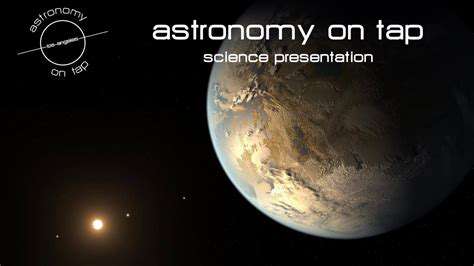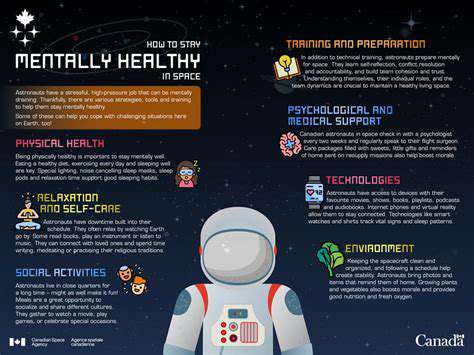Unveiling the Enigmatic Surfaces
Far from the familiar terrains of Earth and Mars, the solar system hosts a breathtaking array of icy moons orbiting gas giants like Jupiter and Saturn. These celestial bodies, cloaked in frozen water, may conceal vast subsurface oceans—some potentially holding more water than all of Earth's seas. What makes these moons particularly intriguing is the tantalizing possibility that they could harbor life, given the presence of organic molecules and energy sources akin to those found near Earth's hydrothermal vents.
Their surfaces tell a story of dynamic geological activity, shaped by processes like cryovolcanism—eruptions of water and ice that might create underwater vents similar to those supporting extremophile life on Earth. Deciphering these geological clues is not just about understanding the moons' past but also about assessing their potential to support life today.
Delving into the Subsurface Oceans
The true allure of these moons lies beneath their icy crusts. Scientists are piecing together the puzzle of these hidden oceans, studying their depth, temperature, and chemical makeup. Liquid water is a cornerstone of life as we know it, making these subsurface seas prime targets in the search for extraterrestrial organisms.
Detecting these oceans often relies on indirect methods, such as measuring gravitational or magnetic anomalies. Future missions, equipped with cutting-edge radar and seismic tools, aim to confirm these oceans' existence and map their properties. Understanding these environments could redefine our search for life beyond Earth.
The Search for Life Beyond Earth
Icy moons like Europa and Enceladus stand at the forefront of astrobiology. Missions such as Europa Clipper are designed to probe these worlds for signs of life, from microbial organisms to more complex ecosystems. The discovery of even simple life forms would revolutionize our understanding of biology and our place in the cosmos.
Finding life elsewhere would not only answer one of humanity's oldest questions but also open a new chapter in our exploration of the universe. The implications for science, philosophy, and our collective imagination would be profound.
Beyond the Familiar: Exploring the Outer Solar System
Unveiling the Ice Giants: Uranus and Neptune
Uranus and Neptune, the solar system's enigmatic ice giants, are worlds of swirling atmospheres and buried oceans of water, ammonia, and methane. Their extreme distances from the Sun have left them largely unexplored, but their unique compositions offer clues about the early solar system's formation.
Their turbulent weather patterns, marked by colossal storms and vivid hues, remain poorly understood. Studying these planets could unlock secrets about planetary formation and the diversity of worlds in our galaxy.
The Dwarf Planets: A New Class of Celestial Bodies
Pluto, Eris, and other dwarf planets challenge traditional definitions of planets. These icy bodies, with their eccentric orbits and varied compositions, provide a window into the solar system's chaotic early history. Their study forces us to rethink how planetary systems evolve.
The Kuiper Belt: A Reservoir of Primordial Material
Beyond Neptune lies the Kuiper Belt, a frozen archive of the solar system's infancy. Its icy inhabitants, from pebble-sized fragments to dwarf planets, preserve chemical and physical records of the solar nebula. Exploring these objects is like reading the first pages of our cosmic story.
The Oort Cloud: A Hypothetical Sphere of Comets
Even farther out, the hypothetical Oort Cloud is thought to be the source of long-period comets. This distant sphere of icy bodies could hold pristine material from the solar system's birth, offering clues about our origins.
The Search for Biosignatures: Clues from Space

Unveiling the Secrets of Life Beyond Earth
The hunt for extraterrestrial life centers on biosignatures—chemical or physical traces of biological activity. Finding these signs would transform our understanding of life's prevalence in the universe. Distinguishing true biosignatures from abiotic processes requires meticulous analysis.
Exploring Atmospheric Biosignatures
Atmospheric gases like oxygen and methane, especially in unexpected ratios, can hint at life. Advanced telescopes are being developed to detect these subtle fingerprints in exoplanet atmospheres.
Geological Biosignatures: Clues from the Past
Fossilized microbial mats or unusual mineral deposits could reveal ancient life on other worlds. These geological records might hold the key to understanding life's potential elsewhere.
The Future of Biosignature Research
Next-generation telescopes and space missions will push the boundaries of detection. Combining cutting-edge technology with interdisciplinary science is essential to unlocking the mysteries of life beyond Earth.
The Future of the Search: Expanding Horizons
Technological Advancements in Exoplanet Exploration
Instruments like the James Webb Space Telescope are revolutionizing our ability to study exoplanet atmospheres. These tools, paired with advanced algorithms, are sharpening our search for habitable worlds.
Expanding the Scope of the Search
The search for life now extends to extreme environments—icy moons, exoplanets with exotic chemistries, and beyond. This broader approach challenges our assumptions and opens new frontiers in astrobiology.










